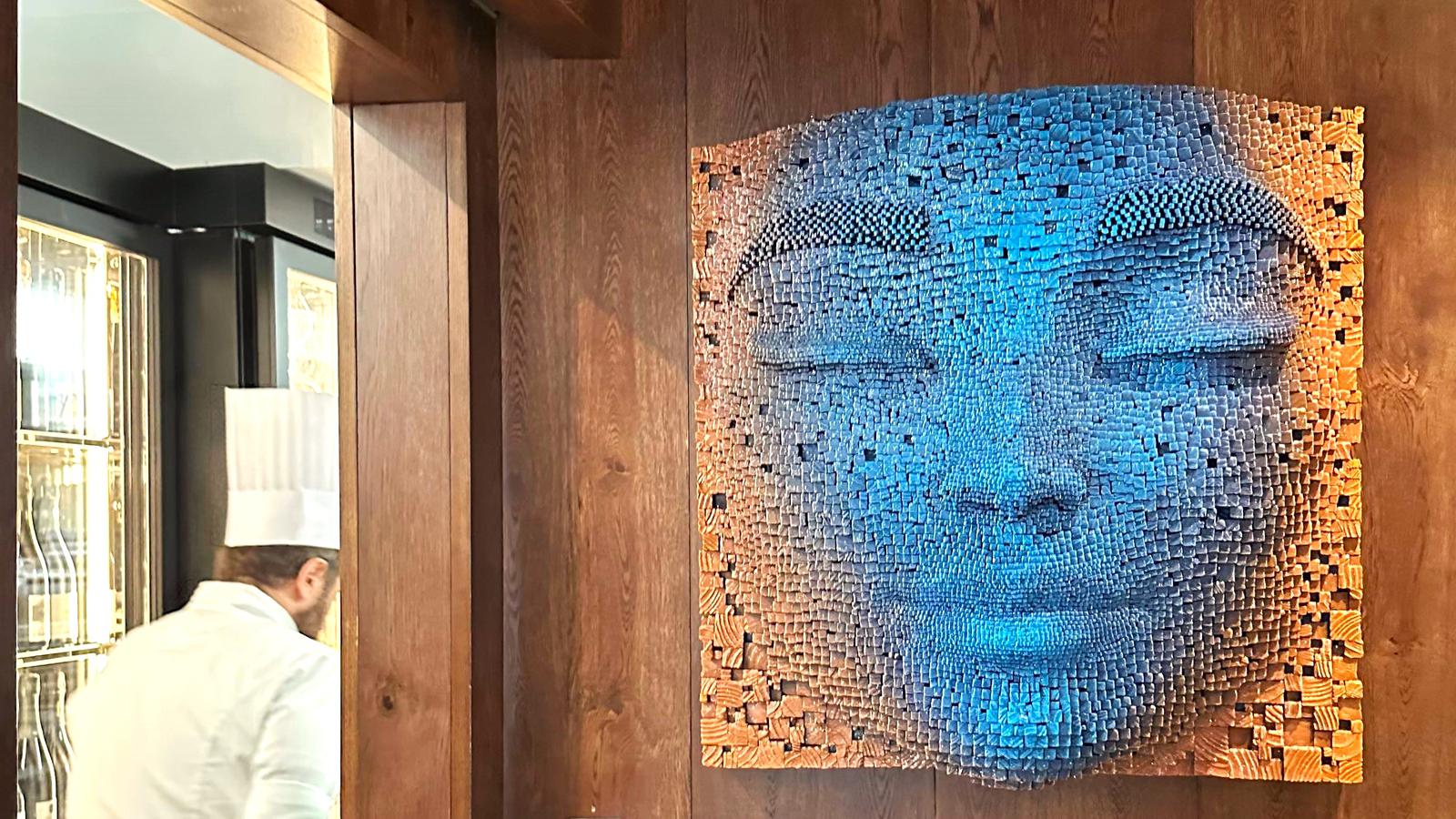Sist’Art renovates its collaboration with Enrico Bartolini’s restaurant GLAM with a timely curatorship on the connection between art and cuisine, while also reflecting on the themes addressed by the 60th Art Biennale titled Foreigners Everywhere .
The artist and the chef have many things in common, such as creativity, technical skills, and the inherent contemporaneity of their creation. Both have the power to create something from scratch, or to take back and bring pre-existing to today, in a sense of continuity with the past. A chef, for example, can follow the steps of a consolidated recipe but give it a new life revolutionizing some aspects. For examples separating the elements and giving a new face to the dish, or using innovative cooking methods, etc. Likewise, the artist can draw on masterpieces of the past whose communicative power still reverberates in the present. Taking them as a reference therefore opens to several interpretations.
Two works by the artists Jisbar and Andrea Morucchio have been installed in the Bistrot . Both art pieces take inspirations from existing works (Leonardo Da Vinci’s Monalisa , Andy Warhol’s Birth of Venus ) as a vehicle of contemporary messages.
The concept of deconstruction is the cornerstone of Morucchio’s series “ Puzzling ”, of which Botticelli’s Venus is part of. Andrea Morucchio is a venetian artist. He started his career as a photographer and then evolved as a sculptor and digital artist, with a focus on socio-political themes. This work is a reconstruction of the Venus through small tiles, that are made by cut pictures of butterfly wings. The technique he uses is based on mosaics and inspired by nature, but has a completely digital origin.
Jisbar , a French urban artist of enormous international success and with a great media appeal, in turn, takes up the iconic Monalisa surrounding her with contemporary and non-contemporary pop references, taken from his cultural background. Various elements converge towards a formal balance and towards a message, often contradictory, about today’s society: its objectives, its desires, its questions.
In the restaurant area, you will find two works representing faces made by the artists Gil Bruvel and Elvira. These two works want to refer to the theme of Biennale , which speaks about a sense of extraneousness, born from being constantly subjected to the ‘ foreigner ’ and from being foreigners ourselves, everywhere we are.
These two artworks, facing one another, are in fact two different representations of the human being, two images in which we can experience both a sense of recognition and of strangeness. The foreigner is a concept that originates from diversity, typically linked to territoriality, race, gender, language, wealth, freedom, etch. This diversity is emphasized in a context of sociality on the move, such as the contemporary one.
Gil Bruvel is an artist born in Sydney, raised in France and now based in the USA. He learned the use of wood from his father that was cabinetmaker, and began his artistic career at a young age. He creates three-dimensional faces made up of wooden strips, which remind us about pixels. His faces are peaceful, satisfied, amused, very rare expressions in a society driven by dissatisfaction and by the desire for more. For this reason, they seem to us to be almost divine faces. In this neutral field, in which the ‘foreign’ has not yet been defined, we can identify and look inside ourselves as individuals, with the aim of understanding what are the deepest and most sincere impulses that move the human being in a state of peace and acceptance.
Finally, Elvira , a young Spanish artist who realizes self-portraits by painting her face and then taking photographs of herself. Here we are showing a black and white artwork, where she invites us to silence (title: Be Quiet ). This invitation can be interpretated in different ways: it can refer to an imposition, the one to remain silent rather than express oneself, which unfortunately happens in many contexts today; it can also be a suggestion to stay silent or look for the silence, having a pause through this condition, from the buzz of the world around us.

